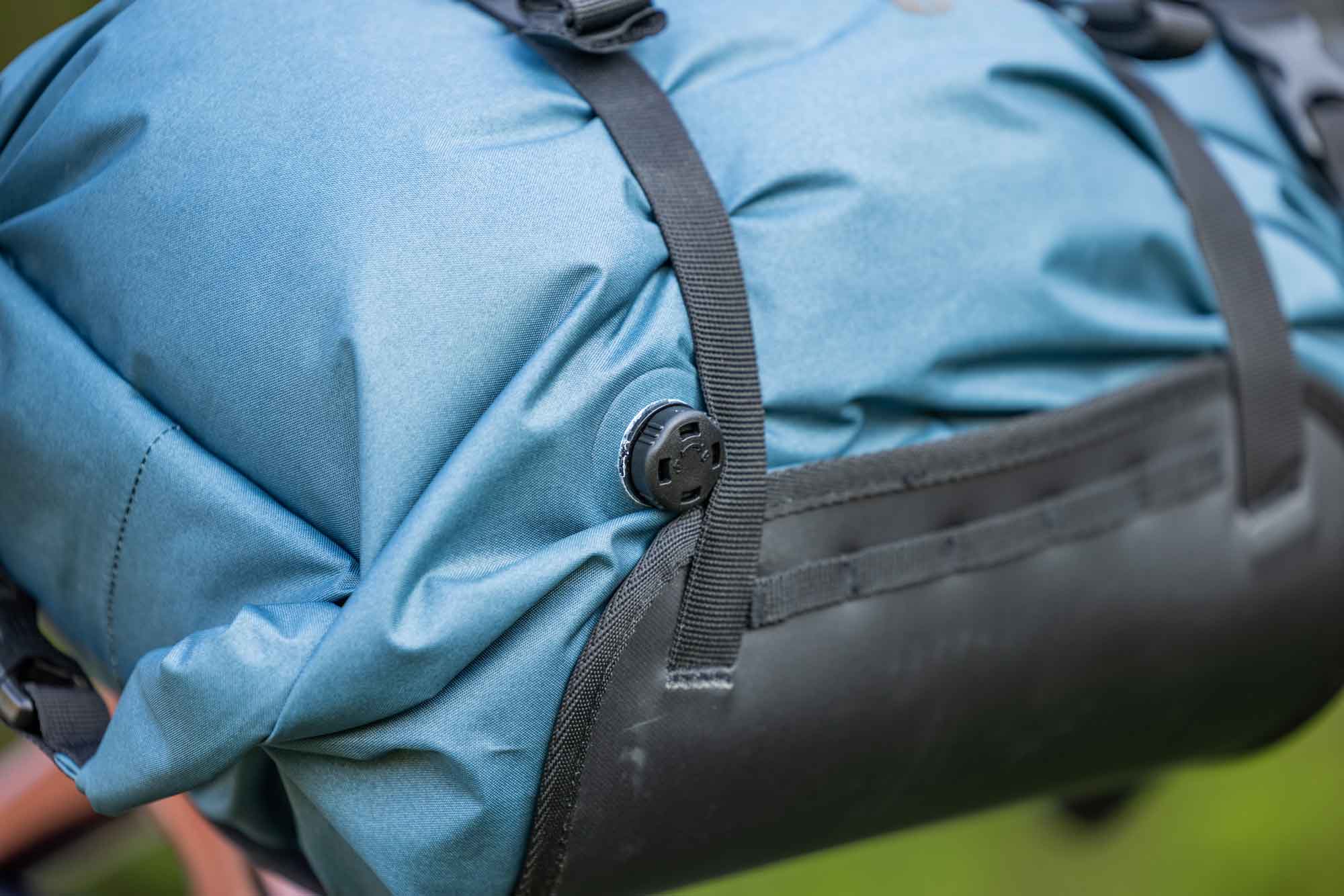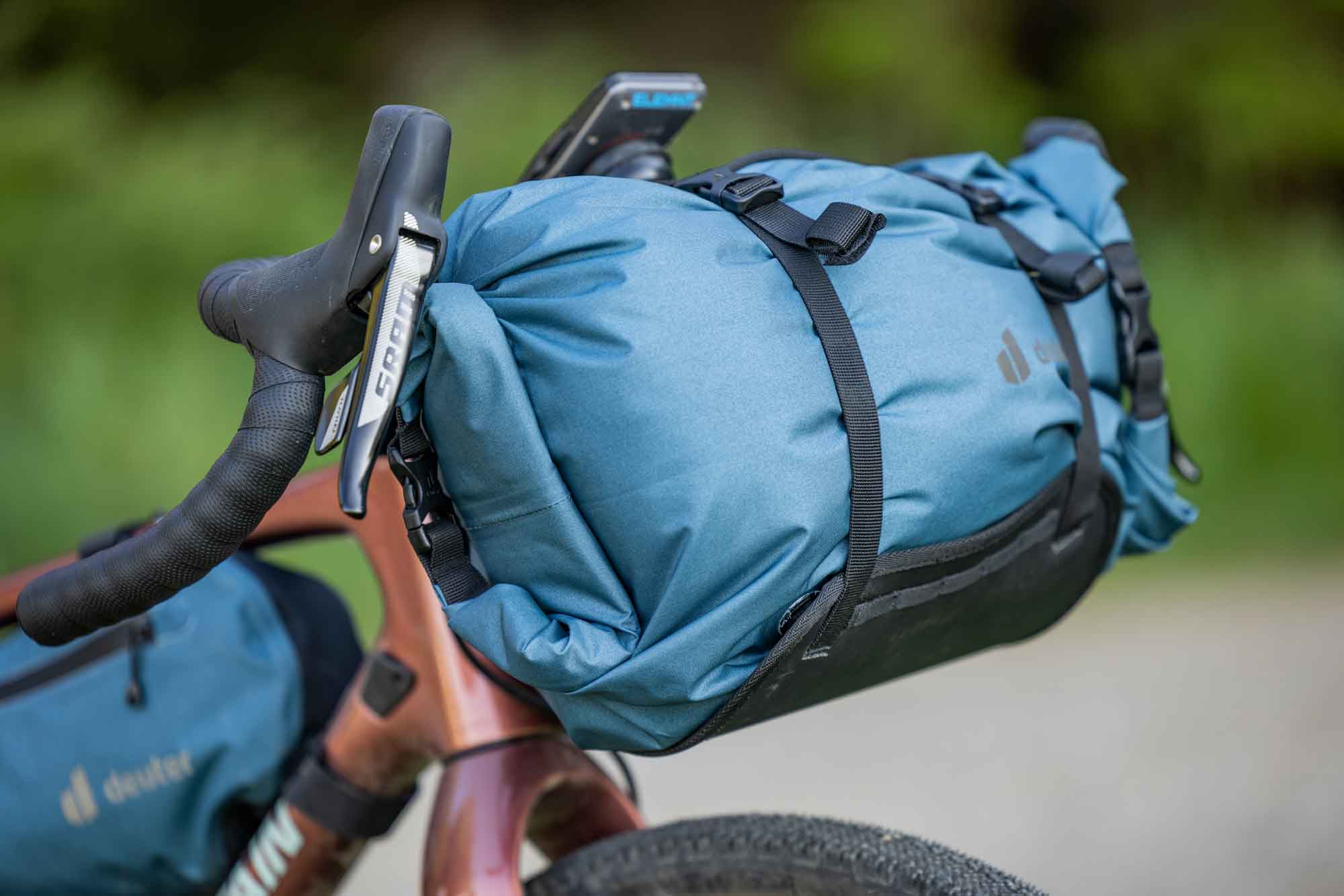Deuter Bikepacking Bags Test: Content
Deuter Bikepacking Bags Test: The Facts
Normally, we take the time to first collect all the data and facts about the product in hand as part of our test stories. We would of course do the same for this Deuter bikepacking bag test – if we hadn’t already done exactly that in a separate article. It’s just a few weeks old and contains everything you need to know about the bikepacking series from Deuter. So if you want to look up all the facts about Deuter Cabezon in beforehand, you can do so here.

Deuter Cabezon: How we tested
So here we go straight to the point. As it should be, we didn’t just strap the Deuter bikepacking bags to our bikes for a quick spin around the block. Of course, they had to prove themselves in real bikepacking life. They were part of several nice overnighters in the Sauerland as well as Martin’s ride to Eurobike 2023. He had decided on the spur of the moment to cycle from Sauerland to the big bicycle fair in Frankfurt am Main. Conveniently, he was on the road on the very day when the summer took a short break: thanks to various short wind and thunderstorm interludes, the equipment was able to prove itself right away in real dirty weather. But first things first …
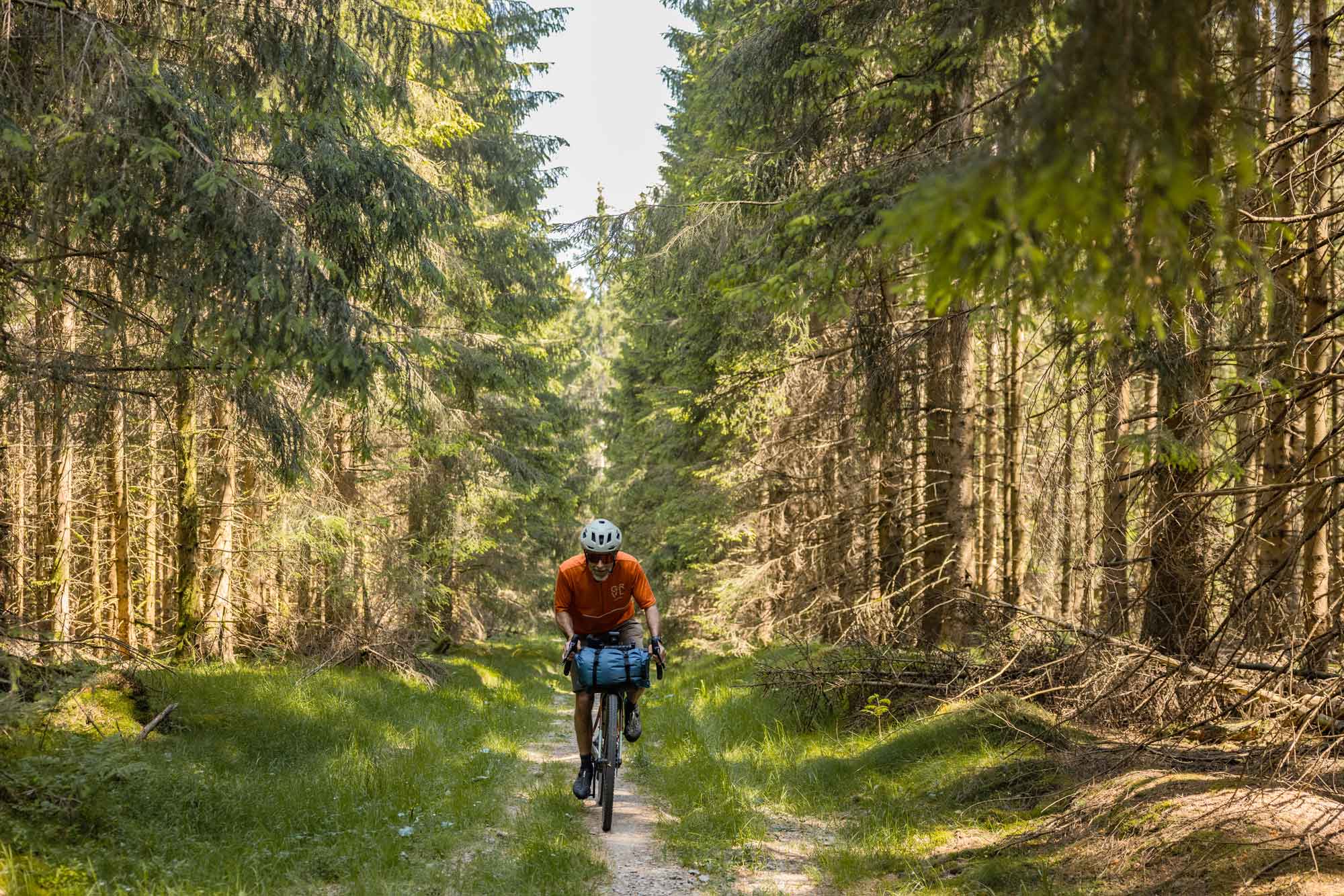
Before it starts: The assembly
Before we use the Deuter Cabezon bags for the first time, we are curious to see whether they fit well on the bike. Thanks to the two-part construction of the handlebar roller and the saddle bag, basically you only have to adjust it once. Afterwards, the mounts remain on the bike and the pack bags can then simply be removed or strapped back on. This is basically practical on the road.
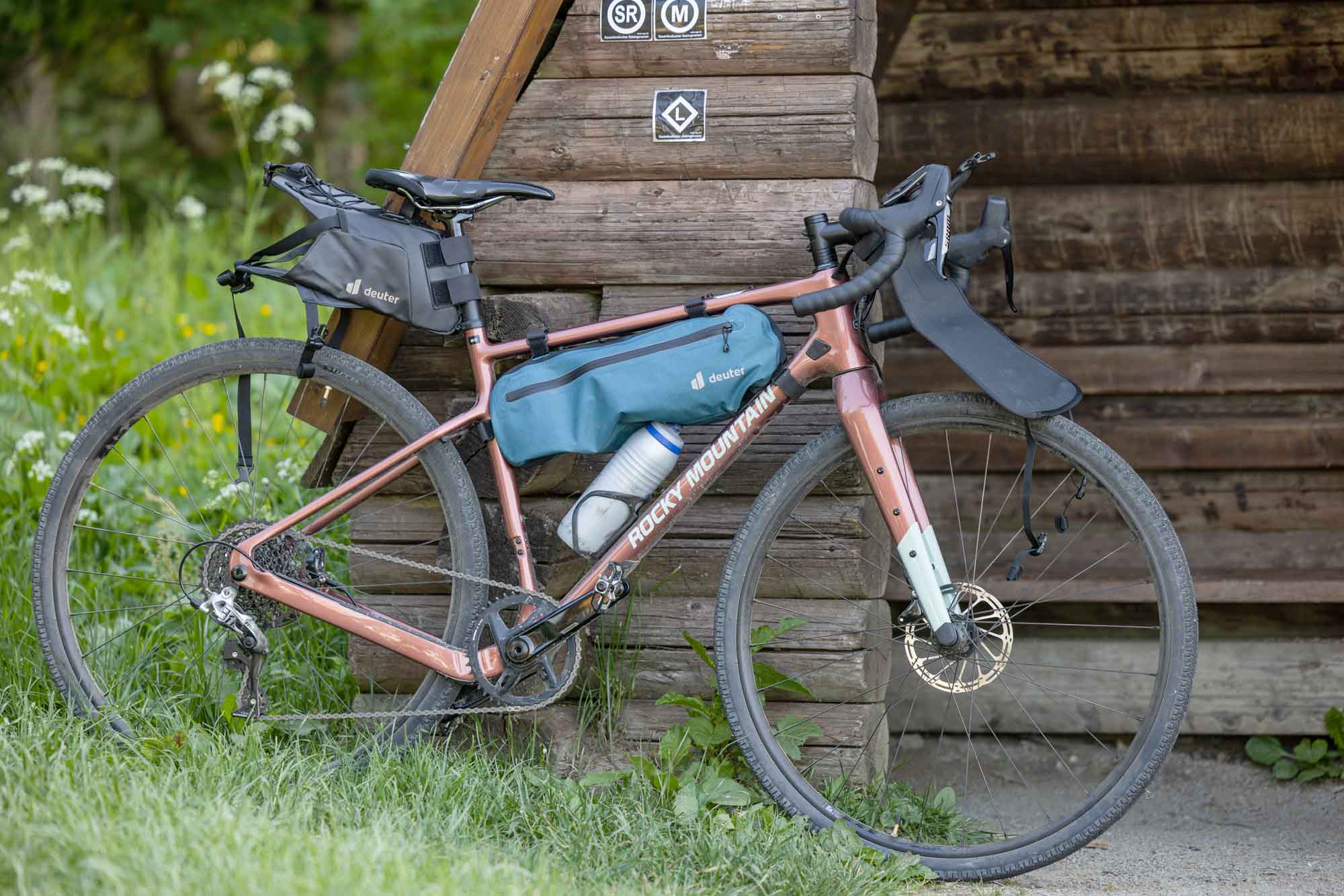
Mounting the two brackets is simple and intuitive – similar to most systems of this type. A clear plus point: the buckles used by Deuter have a very high-quality. These buckles are often a weak spot. If they break, it can become a problem on the journey. It is also unpleasant when the straps come loose on the way because they slip through the buckles. That can’t happen here: With Deuter, the buckles are “locked” with an additional lever after adjustment and thus fixed.
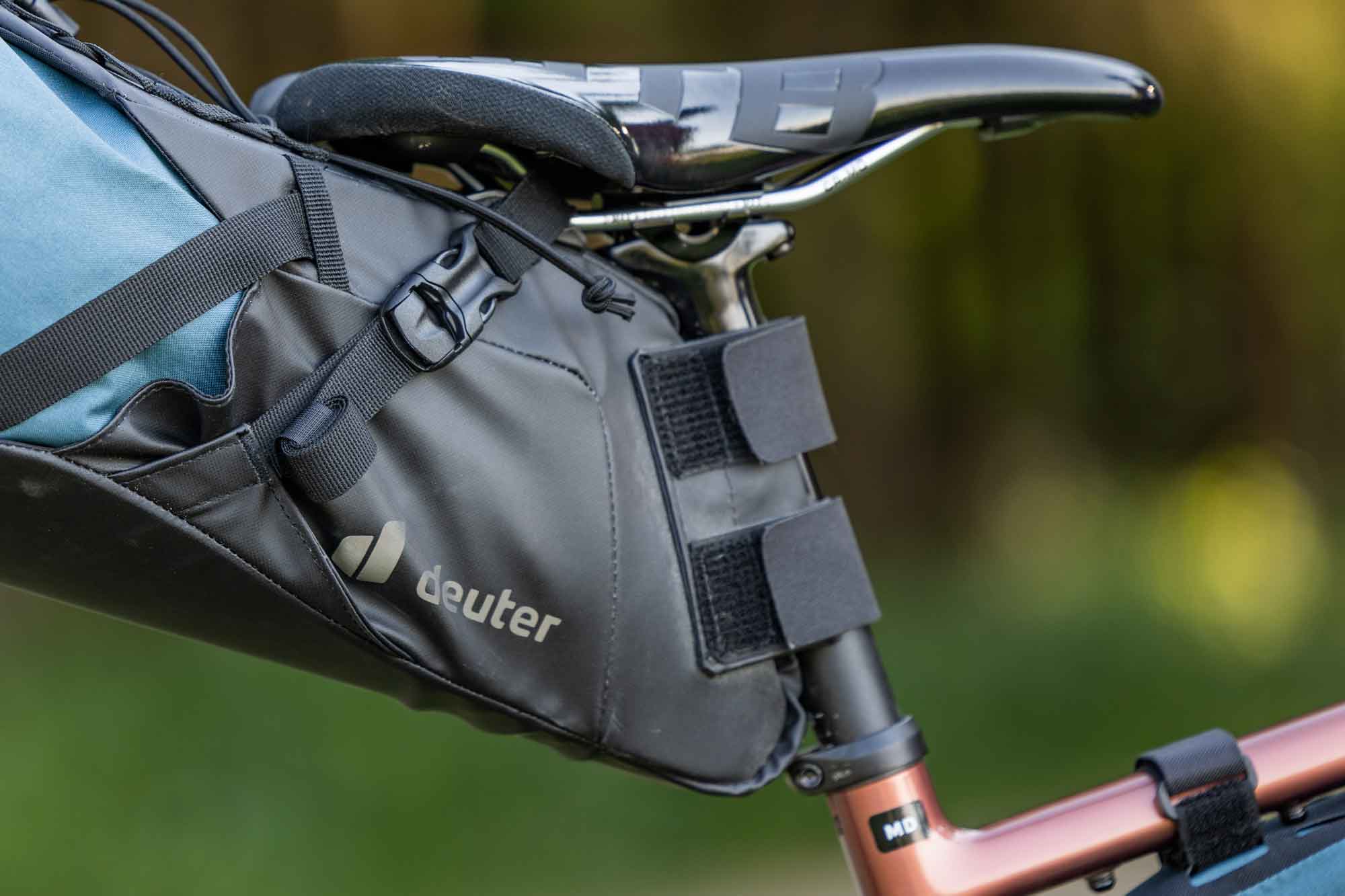
Deuter has come up with two little extras: an additional Velcro strap on the handlebar pulley is intended to ensure that the bracket does not rotate forwards/downwards during the ride. We are curious to see how well this works – in any case, the basic idea is great. There is also an “extra strap” on the saddle bag that you are not used to: it is stretched underneath the pannier and is intended to ensure that the bag – even when it is well filled – does not “bend away” downwards. Here, we are also curious to see whether the additional strap proves its worth.
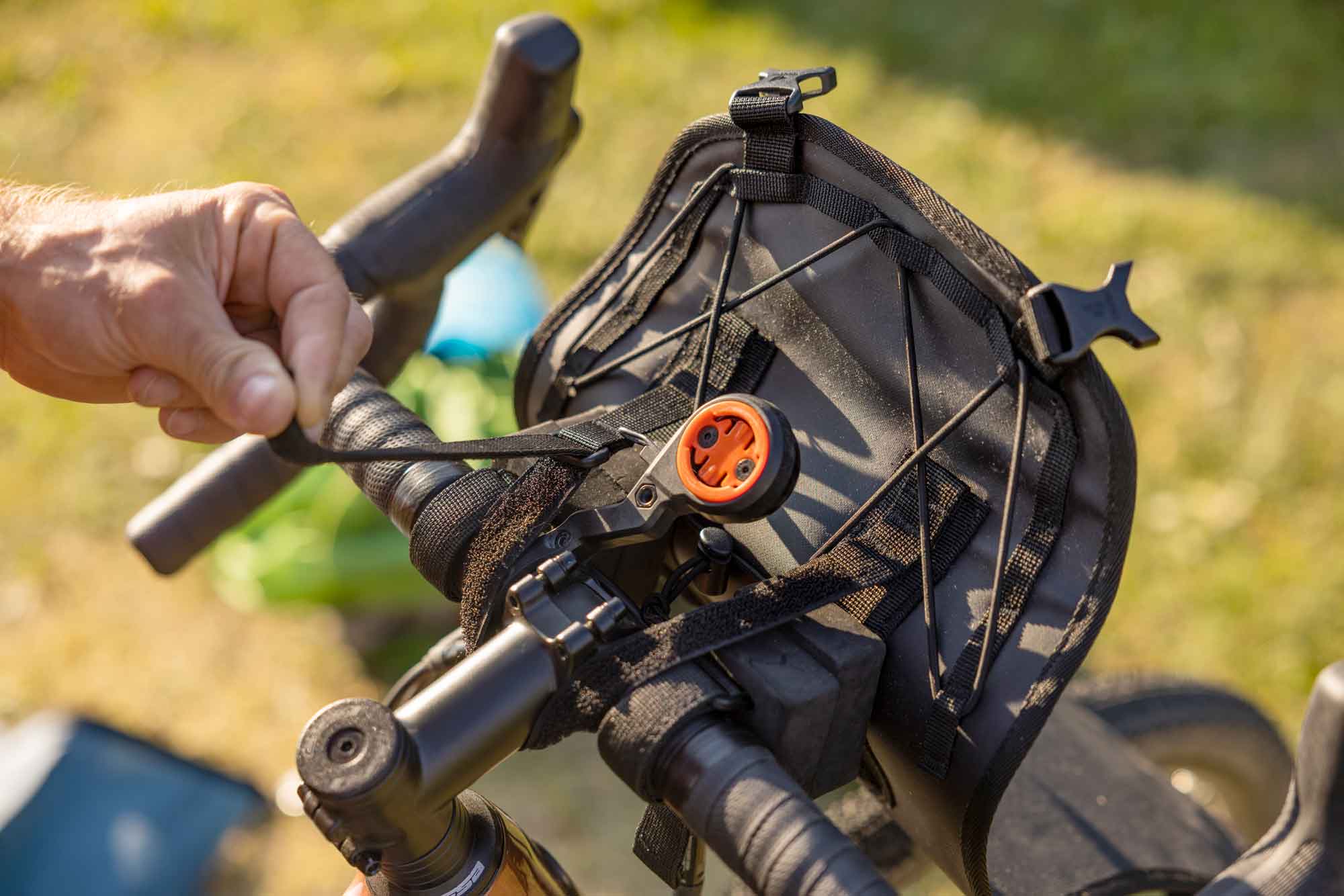
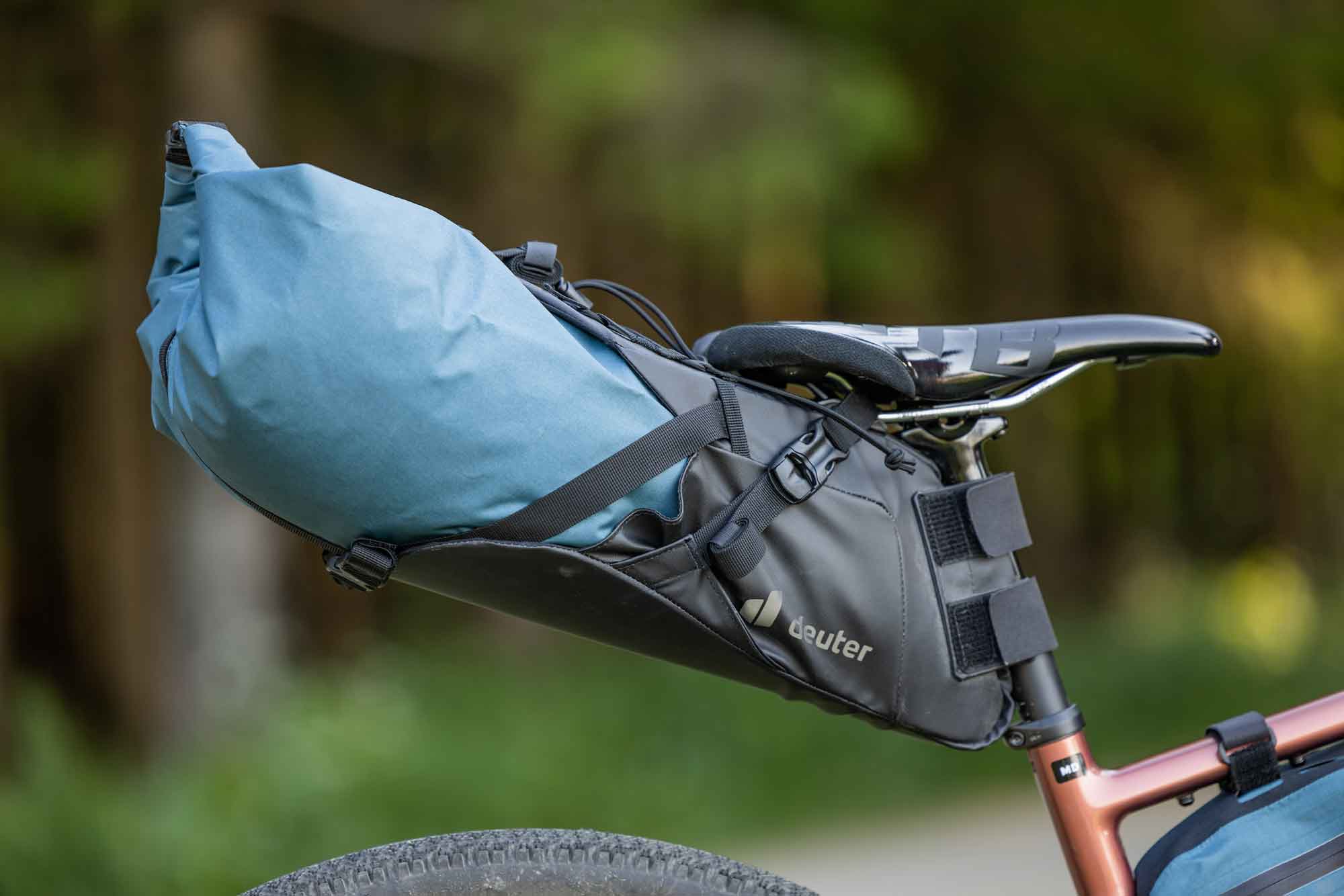
Packing!
Now we have to briefly go into a few facts. Namely, the volumes that the individual Deuter bags provide. The first thing we notice is that – at least it feels like – the new bags fit a lot. The feeling is not wrong: according to the manufacturer, the handlebar bag can hold a whopping 14 litres, and the saddle bag even 16 litres. Plus another four litres from the frame bag.

But what does that mean? In specific terms: the packing process is much more relaxed than, for example, with the Vaude bags we like to use. The sleeping bag, sleeping mat and down jacket go in the front of the handlebar roll in case it gets cold. In the saddlebag you can fit a pair of shoes, all the clothes you need to change into, a rain jacket and a few small items. Alternatively, we were able to fit a tent in here without any problems – because the bag is so long, this is possible without squeezing. The frame bag holds a few spare parts, pump, tool, powerbank, food, wallet and all sorts of odds and ends that you have with you.
Experience shows that if you can fit a lot in your pockets, it’s not always a good thing. When bikepacking, less is more and every gram too much can take its toll on the road. Fortunately, we have understood this in the meantime and have not let ourselves be carried away by the somewhat larger space available. So we just enjoyed the fact that packing was stress-free and that we would always have had some reserves. By the way, another plus: the vent valves. They ensure that the two packsacks for handlebars and saddle can be compressed properly at the very end and can then really be strapped into their respective holders as a tight package.
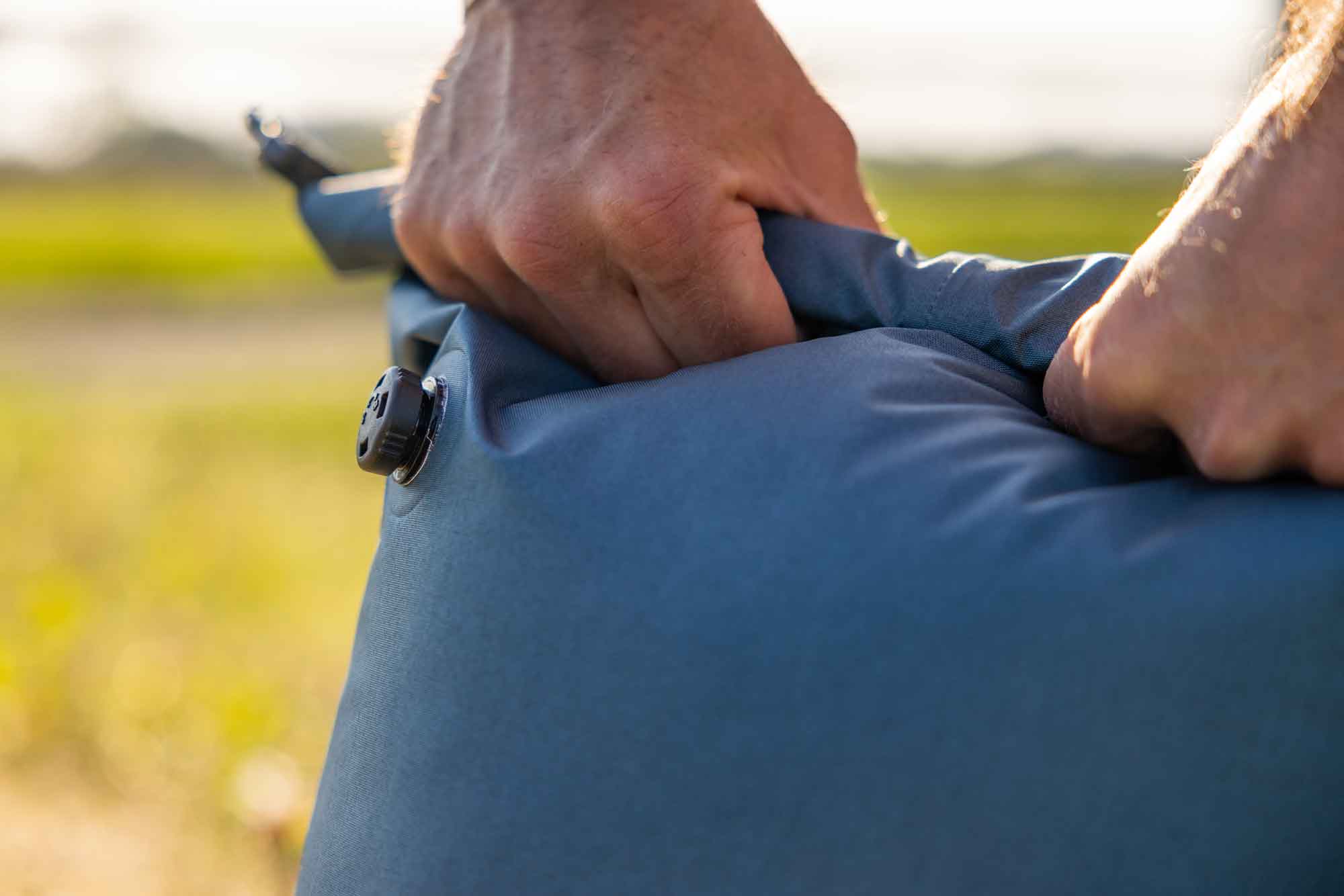
Deuter Bikepacking bag test – on tour
The bike is packed – off we go! It’s not the first time we’ve set off on a trip with new bags and initially we’re in good spirits. Freshly packed, it all looks very good most of the time. But how well thought-out bikepacking bags really are usually becomes apparent only when you’re on the road. After many gravel roads, potholes and various loading and unloading, everything should still fit as well as it did on the departure. Is this the case with the Cabezon bags from Deuter?
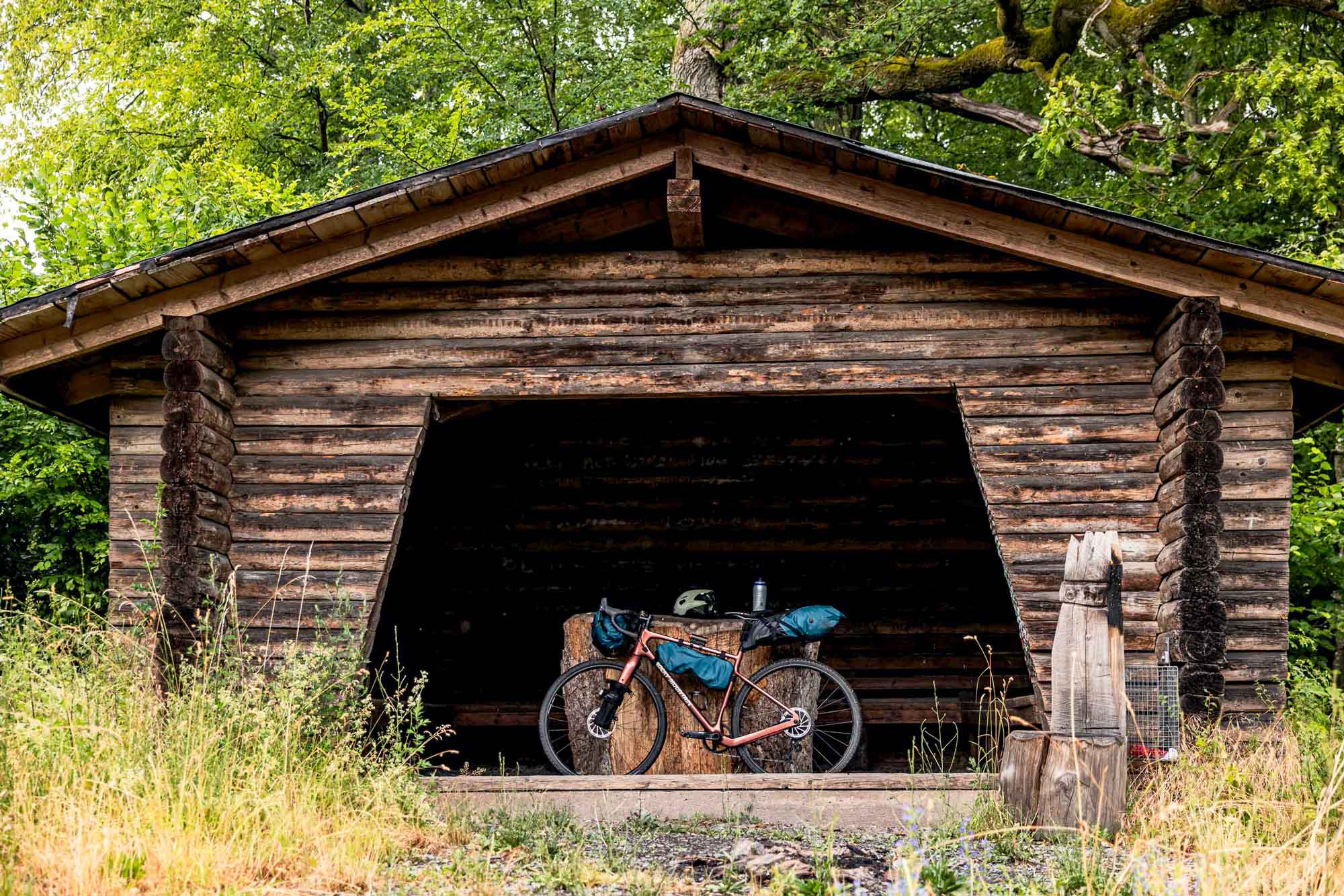
In fact, there were no “incidents” en route. The apparent high quality of all the material pays off. Especially the high-quality buckles: None of the straps come loose. With other bags, it can happen that you have to tighten them on the way. During our Deuter bikepacking bag test, this was never necessary. A big thumbs up for that!
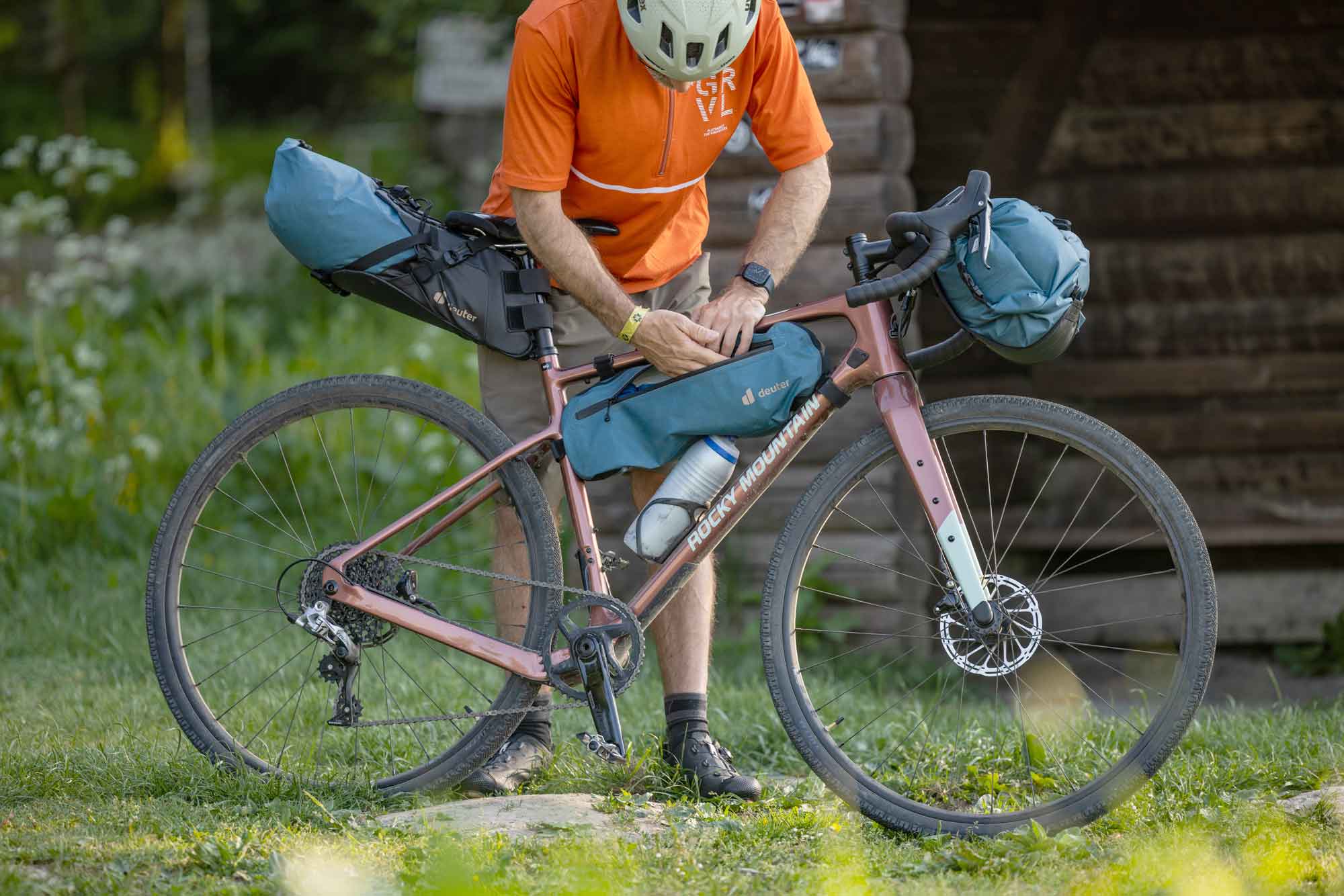
In general, the Deuter bags make a very high-quality impression. The pack sacks themselves seem really robust and are – as we were “allowed” to see thanks to various heavy rain showers – absolutely waterproof. All tension straps, velcro straps and especially the associated seams appear extremely durable and tear-resistant. Only with the air valves did we have the thought: “Let’s see how long they last …”. In fact, there were no problems – nevertheless, they seem somewhat vulnerable to defects.
And how do the “extra straps” on the handlebar bag and on the saddle bag work? As already mentioned above: All in all, the Deuter bags offer top function and do not cause any problems on the road. In that respect, the concept works very well. Nevertheless, the aforementioned tensioning strap on the handlebar roller in particular does not look very “elegant” in the long run. The bracket twists anyway – especially when the paths are often really bumpy. This happens because the two spacers can be compressed further and further and bend away downwards over time. There is certainly still slight potential for optimisation here.
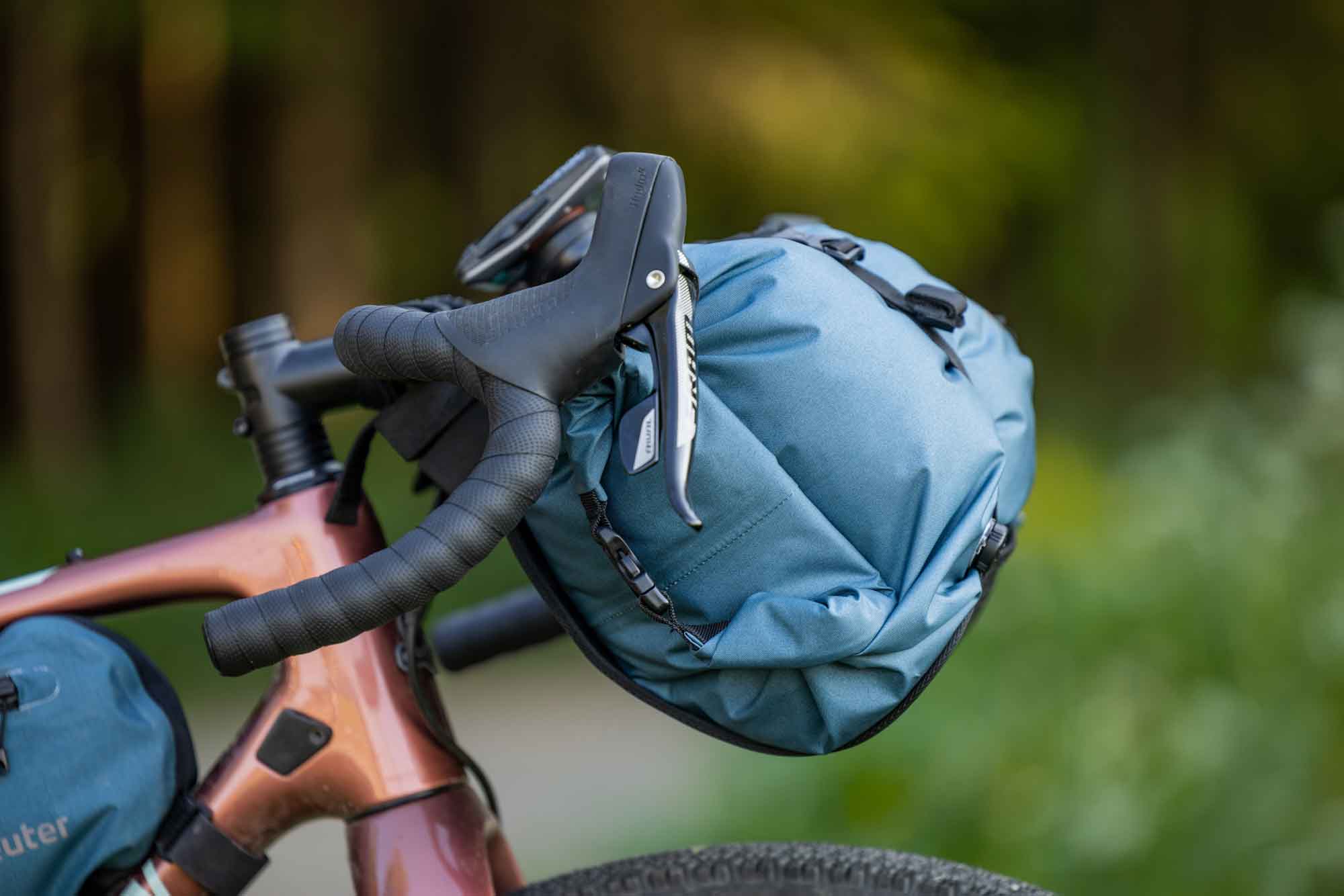
Deuter bikepacking bag test – bottom line
Even if not every little detail is perfect right away: Deuter has done a hell of a lot right with its Cabezon bags. In particular, the high quality of the materials makes a positive impact on the way. Everything seems absolutely robust, especially the typical weak points like plastic buckles or seams give no reason for concern. We travelled many kilometres with the Deuter Cabezon series and did not have one “incident”. No twisting, no lashing – everything stayed in place. The bags really do offer a lot of storage space and are particularly easy and compact to pack – also thanks to the air valve. Last but not least, Deuter is of course also a real recommendation when it comes to sustainability.
